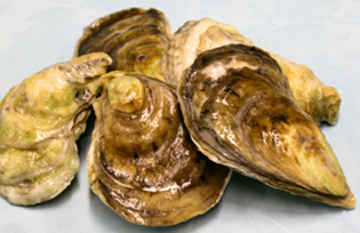An oyster shell is like a time capsule — it holds information about the world in which it was created. And finding the key to that capsule may help scientists learn more about our planet’s changing climate.
 An oyster shell is like a time capsule. Credit: New York State, Department of Environmental Conservation
An oyster shell is like a time capsule. Credit: New York State, Department of Environmental ConservationA recent study, for example, looked at oysters in bays along part of the Texas coast. This region sees both prolonged droughts and big floods. But reliable climate records go back only about a hundred years. Scientists would like to know more about earlier times to better understand how conditions are changing as Earth warms up.
And that’s where the oysters may help. They build their shells one layer at a time. Like tree rings, individual layers represent seasons or years. The thickness and composition of these layers vary depending on what’s happening in the water around the oyster.
Researchers at the University of Texas Marine Science Institute gathered oysters from nearby bays, at sites close to instruments that record environmental conditions. They then sliced into the shells and measured the amounts of particular forms of carbon and oxygen. The researchers found that when there’s a drought, the ratio of these isotopes in the oyster shells goes up, and when there’s flooding, it goes down.
The type of oyster used in the study was picked in part because shells have been found in many archaeological sites. So by slicing into some of those shells, scientists may be able to piece together a longer history of the cycle of drought and flood — a history preserved in marine time capsules.
This episode of Science and the Sea was made possible by Chuck Nash Chevrolet-Buick-GMC.

